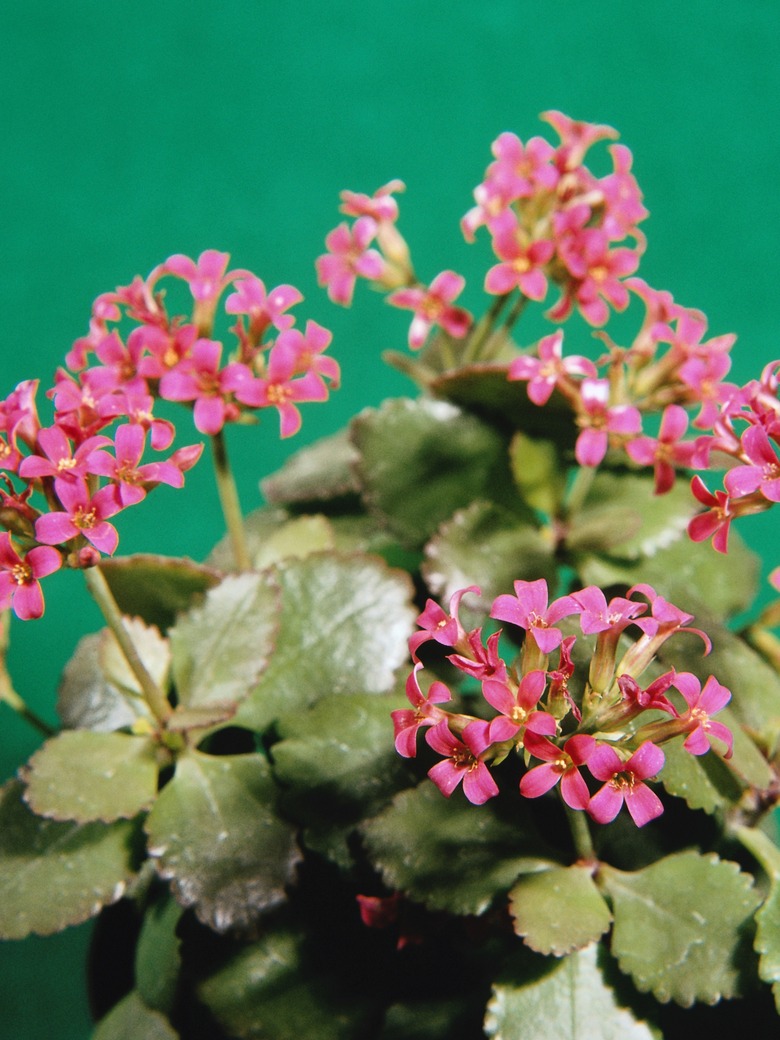How To Deadhead Kalanchoe
Kalanchoes are primarily grown as indoor flowering plants. The plants produce lush, glossy green foliage year-round and feature brightly colored flowers in abundance during the winter months. Most newer kalanchoe varieties are self-cleaning, which means they drop their flowers naturally after blooming instead of setting seed. Older varieties might still produce seed, resulting in a plant covered with unattractive wilted flowers. Deadheading, or removing the old flowers, improves the plant's appearance and might encourage it to produce more blooms.
Step 1
Inspect the kalanchoe regularly during the flowering season. If the petals remain on the flower clusters after they wilt, your variety likely requires deadheading.
Step 2
Grasp a flower cluster at its base after most of the blooms have withered and begun to turn brown.
Step 3
Snip off the flowering stem near its base above the first set of large leaves with a small pair of shears. Avoid pinching or pulling the flower clusters off because that can cause damage to the fleshy kalanchoe stems. Dispose of the removed flower cluster.
Step 4
Deadhead the kalanchoe one to two times a week throughout the flowering season. Deadheading each time you water the plant works well.
Tip
You can deadhead self-cleaning varieties if the clusters begin to look unattractive before all the petals have wilted.
